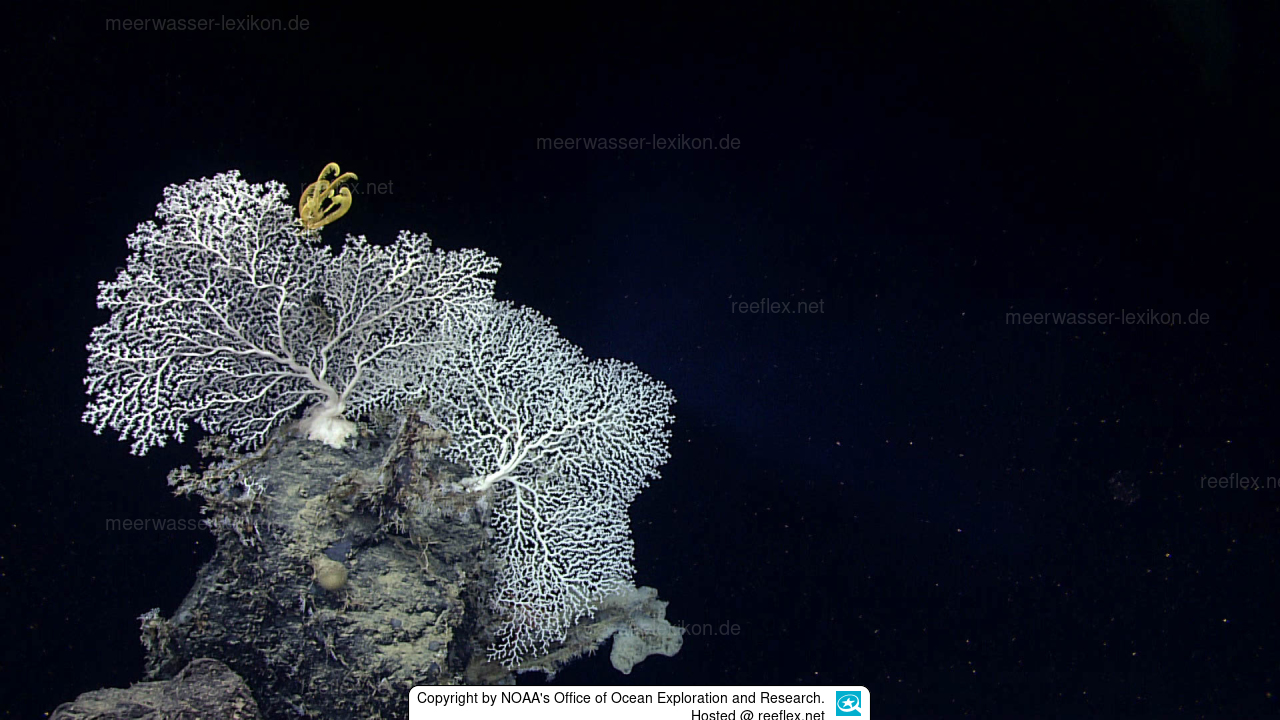Info
This species has been recorded from the Florida shelf and from a number of seamounts in the northwestern Atlantic.
It was first described in the Straits of Florida and is known from the Bahamas, the New England Seamount Chain, Kelvin Seamount, and the Corner Rise Seamount Group.
Freshly collected and unfixed colonies of Hemicorallium niobe have white to light pink coenenchyma.
Dimensions: 70cm in height and 50cm in width.
Colonies of the coral are anchored on exposed basaltic bedrock, the substrate is covered with a thin layer of calcareous tissue.
Colonies of Corallium niobe harbor the commensal polychaete, Gorgoniapolynoe ceceilae (Fauvel,1913), which lives in tunnels formed by changes in the coenenchyma along the branches of the host colony.
This polychaete also lives on colonies of the primnoid coral Candidella imbricata (Johnson, 1862).
The presence of invertebrate commensals on selected coral species from the deep sea suggests the existence of a species-specific commensal-host relationship.
It is possible that the unique metabolic characteristics of certain coral species create a chemical and physical environment that is suitable for, or tolerated by, a few species of commensal invertebrates.
If a specific relationship exists between coral host and invertebrate commensals for Corallium species, then the presence of a commensal species may be an additional taxonomic feature for identifying specific deepwater coral species.
Synonym: Corallium niobe Bayer, 1964
It was first described in the Straits of Florida and is known from the Bahamas, the New England Seamount Chain, Kelvin Seamount, and the Corner Rise Seamount Group.
Freshly collected and unfixed colonies of Hemicorallium niobe have white to light pink coenenchyma.
Dimensions: 70cm in height and 50cm in width.
Colonies of the coral are anchored on exposed basaltic bedrock, the substrate is covered with a thin layer of calcareous tissue.
Colonies of Corallium niobe harbor the commensal polychaete, Gorgoniapolynoe ceceilae (Fauvel,1913), which lives in tunnels formed by changes in the coenenchyma along the branches of the host colony.
This polychaete also lives on colonies of the primnoid coral Candidella imbricata (Johnson, 1862).
The presence of invertebrate commensals on selected coral species from the deep sea suggests the existence of a species-specific commensal-host relationship.
It is possible that the unique metabolic characteristics of certain coral species create a chemical and physical environment that is suitable for, or tolerated by, a few species of commensal invertebrates.
If a specific relationship exists between coral host and invertebrate commensals for Corallium species, then the presence of a commensal species may be an additional taxonomic feature for identifying specific deepwater coral species.
Synonym: Corallium niobe Bayer, 1964







 NOAA's Office of Ocean Exploration and Research
NOAA's Office of Ocean Exploration and Research










